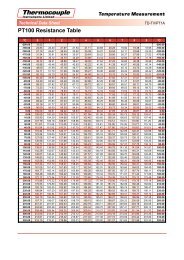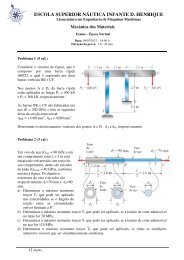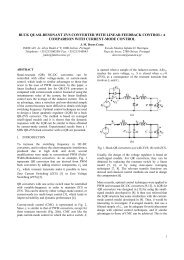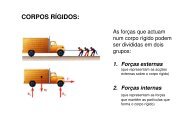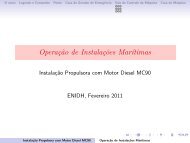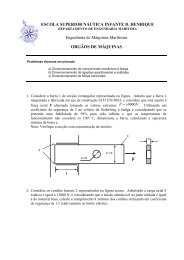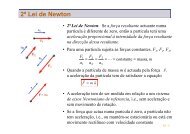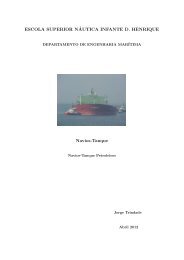Textos de Apoio (pdf)
Textos de Apoio (pdf)
Textos de Apoio (pdf)
Create successful ePaper yourself
Turn your PDF publications into a flip-book with our unique Google optimized e-Paper software.
Bunker price, US$/tonne<br />
380cSt HFO<br />
500<br />
400<br />
300<br />
200<br />
100<br />
2004 2005 2006 2007 2008<br />
Fig. 5: Bunker prices have consi<strong>de</strong>rably increased in recent times. The chart shows the average price of 380 cSt heavy fuel oil (HFO)<br />
from various ports around the world from 2004 to 2008. The green bars indicate the mean price for each year.<br />
[08#045]<br />
lower fuel consumption.<br />
However, un<strong>de</strong>r the pressure of first costs and<br />
softening bunker prices the strategy was changed and<br />
the selected power/speed combination has, during<br />
the past 15 years or so, been selected to be closer to<br />
the R1 rating (Fig. 4).<br />
Yet, more recently, bunker prices have steadily<br />
climbed, rising by some 85 per cent in the course of<br />
2007 from US$ 270 to US$ 500 per tonne (Fig. 5).<br />
The result is that bunkers are now the dominant part<br />
of ship operating costs.<br />
Such drastic increases in bunker prices give a<br />
strong impetus to reduce fuel costs. They can also<br />
justify additional investment cost such as selecting<br />
an engine with an extra cylin<strong>de</strong>r. The consequent<br />
fuel saving may make for an acceptable payback time<br />
on the additional investment cost. It would justify<br />
any efforts to increase the overall efficiency of the<br />
complete propulsion system.<br />
Further impetus to implementing such changes<br />
in engine selection strategy will come from a future<br />
need to cut CO 2<br />
emissions. If a carbon trading<br />
scheme is imposed on shipping it would give further<br />
economic advantage to reducing fuel consumption<br />
and further help to pay for any necessary extra<br />
investment costs.<br />
In addition it is important to bear in mind that<br />
the fuel savings measures discussed here will also<br />
result in lower NO X<br />
emissions in absolute terms.<br />
Derating engines for greater fuel savings<br />
In the following pages are some case studies for ship<br />
installations for which an engine is selected with an<br />
extra cylin<strong>de</strong>r without increasing the engine’s power.<br />
These cases <strong>de</strong>monstrate that such engine <strong>de</strong>rating<br />
can be an advantageous solution with remarkable<br />
saving potential. Depending on bunker costs, such a<br />
strategy can have a very attractive pay-back time.<br />
The four case studies are for a Suezmax tanker,<br />
a Capesize bulk carrier, a Panamax container ship<br />
and a Post-Panamax container ship. They inclu<strong>de</strong><br />
estimations of the respective pay-back times for the<br />
additional engine costs.<br />
— 3 — © Wärtsilä Corporation, June 2008


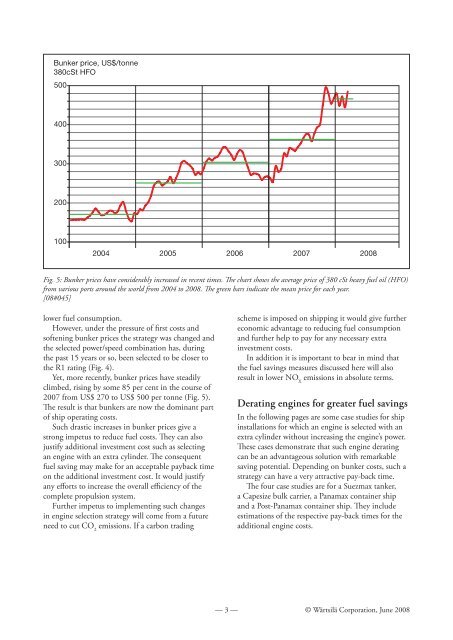
![Conceitos transmissao de dados .Sinais[.pdf]](https://img.yumpu.com/50982145/1/190x146/conceitos-transmissao-de-dados-sinaispdf.jpg?quality=85)
![Packages e interfaces[.pdf]](https://img.yumpu.com/50629553/1/190x134/packages-e-interfacespdf.jpg?quality=85)
